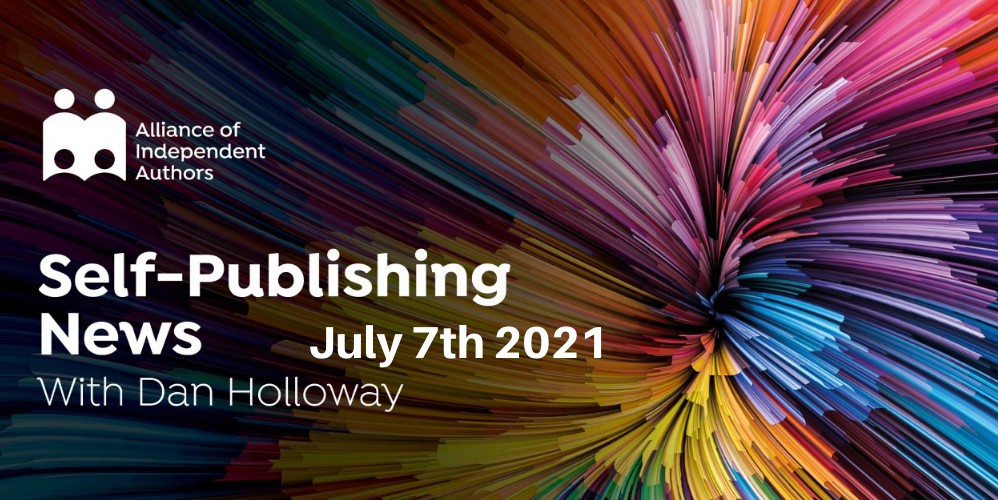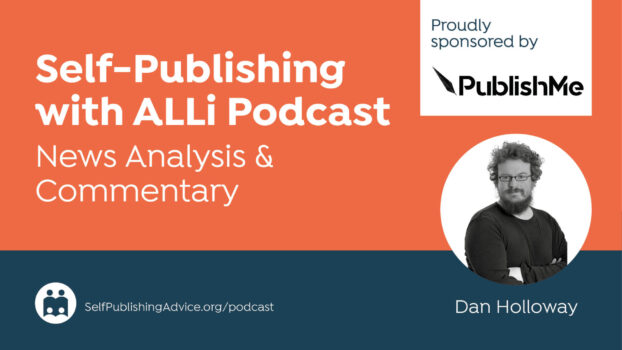In this week's Self-Publishing News Special, ALLi News Editor Dan Holloway looks at Twitter Facets, which would allow authors to reach different audiences from the same account.

ALLi's News Editor Dan Holloway
Please note that for one week only, #Indieauthorchat, on the subject of blogging for writers this week, will take place this Thursday, not Wednesday, but at the usual time of at 8pm BST, 3PM Eastern Time, Noon Pacific. In this month’s self-publishing news podcast, Howard and I ask why there are so few young indie authors entering prestigious awards for which they are eligible, and what we can do to change that.
Twitter Facets: Reaching Different Audiences from the Same Account
Many of you, like me, might write in different genres. If you do, you will have encountered a very basic question. Do you use a different name for each one? If you don’t, you might seriously confuse people. Or worse – if you write children’s books and horror, for example, you might have some disappointed readers on both sides! True, if you do use a series of pseudonyms there’s a risk you’ll lose loads of potential readers who don’t know the “other you” exists. But most of us eventually decide on that route. For me, the choice goes back to one of my student days icons, the late great Iain Banks.
I am sure many of us who use social media have also felt the need for this ability to speak to different audiences. Having to create a new account every time we embark on a new genre or a new project can be just exhausting. Yet if we just scattershot everything to one audience, we can end up missing the people we really want to connect with. And we can end up boring large parts of our audience with large numbers of our posts.
Twitter Facets, currently in testing with some users, offers a solution. It provides the chance to tweet to different groups of your followers depending on what you're tweeting about. Importantly for convenience, you can do it all from one account, using different “personas”. These function very much like different pen names for different genres. Or like the segmented campaigns we can run for our email list.
Audiobook Subscription Continues to Grow
It’s been another week of big growth announcements in the subscription streaming market. Bookbeat is at the heart of it this time. It has just announced that in the second quarter of the year it racked up its half millionth subscriber. Mark Williams makes the very interesting point that for some time Bookbeat promotional materials have not mentioned the company’s UK platform. It still, he reminds us, exists. We really are not, in the UK, limited to Amazon as a platform for our audiobooks.
We tend to think of Bookwire as a publishing version of Gartner. They produce a fascinating series of reports into the state of the industry, in particular the digital industry. The most recent of these, looking at the growth of digital, came out just a couple of weeks ago . I highly recommend spending an hour or so absorbing it. But Bookwire’s primary function is a digital distribution platform.
And it is in that capacity that they have made headlines this week, signing a deal to distribute Spanish-language catalogue Editorial Planeta’s 30,000 ebooks and 1200 audiobooks. They will be bringing these books to a range of Spanish-speaking markets in South America. This will allow them a large chink of a very large market, and one in which Amazon is a very small player.
How Indies Make Their Income
There are lots of reasons to love Jane Friedman. She has been at the heart of indie authors’ lives for well over a decade, and was one of the first contacts I made when I started self-publishing in a land long ago before the time of Kindle. One of the particularly valuable things she does is to map out the different streams of revenue that can come together to provide us with an income. Each year, for example, she updates the “ways of publishing” chart which tells us about self-publishing, traditional publishing, and hybrid. You can find the 2021 version here.
This week she has provided some invaluable information about the way she builds her business from writing. Please read her post in full and subscribe to her updates, but these are the takeaway points. Her key is to focus on three core areas: teaching, consulting one to one with writers, and freelance commissions. Other income streams come and go, but these are the core around which her income is built. I took two things from this post. First, even the most successful of us need a portfolio. And second, there has to be a degree of niche-finding and long-termism. Yes, we can take advantage of opportunities around the edges, but the key is building a diversified core business.
Paper Shortage Strikes Again
A couple of years ago, the US publishing industry was struggling because of a paper shortage. Now it’s the turn of Russia. The shortage has come at a difficult time for an industry struggling to get on its feet after Covid.
What this does raise is a much wider question about the sustainability of the publishing industry. And by sustainability, I mean both the common senses in which we use that word. The rise of NFTs, reliant on blockchain technology that creates more pollution each year than many large countries, has only exacerbated environmental concerns about the publishing industry. Book pulling and returns have always been a problem. This feels like another area in which as indies we could be taking the lead in showing how we can make things better.
How do indie authors make their income and other top #selfpub news stories for #indieauthors, in one quick read, by #ALLi News Editor Dan Holloway @agnieszkasshoes #digitaleconomy #publishingopenup Share on XUpcoming Conferences and Events
Help us fill this with great online events in the coming weeks and months. I highly recommend this great list of online writers' conferences from Nate Hoffelder, some of which are indie-inclusive.
Bay Area Independent Publishers Association (BAIPA) – Zoom meetings the 2nd Saturday of each month
JULY
Comic Con, 22-25 Jul




